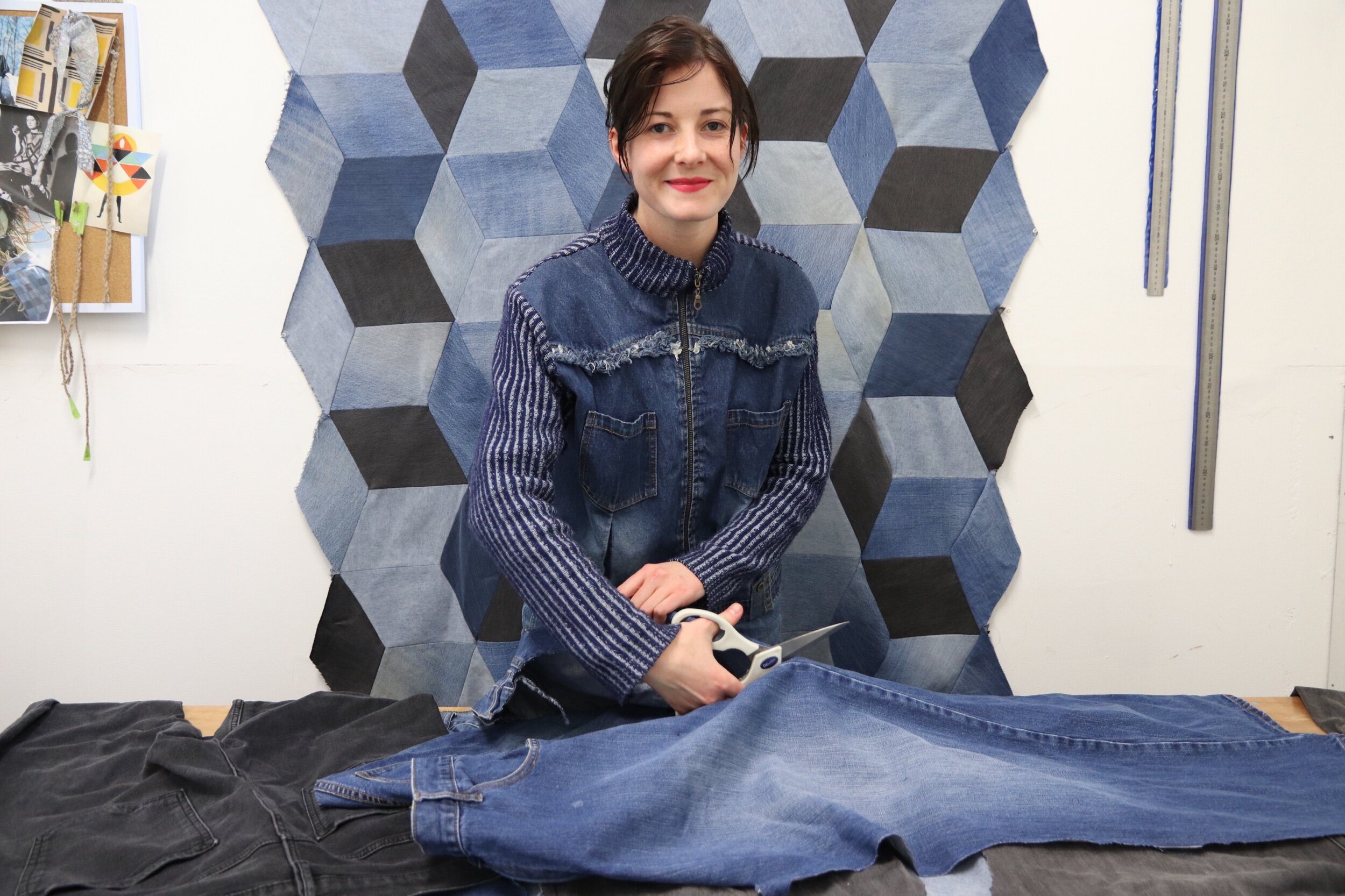Image courtesy of the artist.
Phoebe Beard
Phoebe Beard is a visual artist living and working in Melbourne/Naarm. Beard examines symbols and systems of power, specifically associated with cultivation and community. Working predominantly with printmaking and drawing, Beard constructs artworks that reference romantic and religious folklore intrinsic to agricultural life and history. Beard has most recently exhibited with Blindside Gallery, Good Grief Studios, Watch This Space and Quivering in Quarantine.
Tell us about your creative process, what drives your practice?
My artistic practice is informed by my relationship to place; creating artworks that respond to social or environmental issues around me. Activities such as gardening inform my relationship to art, creating artworks that speak to sustainable and social methods of food production.
In December 2019 I began to research contemporary cultivation methods; seeking to understand the world of agriculture and land management. I became interested in the idea of “pest control,” pursuing images of scarecrows that deter birds and bugs. This interest in organic pesticides led to my fascination with straw and straw sculpture.
The image and idea of the scarecrow allowed me to pursue a visual narrative that spoke of fire, regeneration and growth. Burning straw sculptures in honour of celestial and pagan gods is common practice in agricultural regions. This practice of ritual and regeneration informed my own narrative, constructing sculptures out of found and recycled material.
What sparked your interest in religious folklore and mythologies? How do you engage with these narratives?
My interest in religious narratives arose from my investigation into cultural associations of wheat. The historical function of scarecrows as effigies, and the light of a lantern, are both instruments used to guard plots of land. Burning straw sculptures is a way to honour celestial and mythological gods whilst encouraging regeneration and soil fertility.
Priapus, god of fertility was supposedly the original scarecrow, illustrated in Greek mythology as the protector of crops and vineyards. Like with most gods in classical literature, their features were usually exaggerated, sporting long limbs and fixed facial expressions. These stories all allude to the awkward and ephemeral scarecrows commonly dressed in tartan and/or denim fabric.
Sewing and stitching fabric together I sought to replicate soft textures described in fictional poems and books. Kostroma, god of fire and fertility, is usually adorned with colourful fabric, with her statue a main feature at the festival known as Maslenitsa. Agricultural festivals like Maslenitsa support my research into food production, sacrificing straw sculptures in the name of food.
What inspired you to push printmaking into a sculptural medium? What is the significance of the recurring lantern structure?
After exhibiting with various artist run spaces, I started to consider how these three-dimensional spaces informed the creation of my artworks. Planning a series of print-based works, I would consider cost and installation; remembering that these were non-commercial exhibition spaces.
Budget and aesthetics would inform the final artwork design, resulting in a temporary or sculptural frame. The artwork titled Dreaming of a Morning Star (2020) used a steel lantern to frame two relief prints. The glass was removed from all four sides, allowing me to install the print and transport the sculpture via post.
The lantern and subsequent candle is an important motif in chiaroscuro paintings. Usually placed on a table, the lantern would illuminate the painterly scene, adding drama and mystery for effect. This portable light source proved to be an excellent choice of frame as it discussed the power of fire in religious painting and art.
Are there any female printmakers | artists that influence you?
As I start to plan a series of artworks, I will usually visit a local library, embarking on the very early stages of research. These early stages consist of reading art magazines and classical novels like The Divine Comedy by Dante Alighieri and The Great God Pan by Arthur Machen. Drawings and prints found in these books inform my research, assisting with a visual narrative.
Aside from reading I take inspiration from various contemporary and classical printmakers such as Magdalena van de Passe, Betye Saar, Rebecca Mayo and Regina Pilawuk Wilson. Each of these artists are informed by narrative which informs their two-dimensional or three-dimensional prints. Like Rebecca Mayo and her artwork It’s in the bag created in 2019, I choose materials that present unusual results; be that on the surface or as a sculpture.
Simple colours and patterns are fundamental to printmaking with Betye Saar and Regina Pilawuk Wilson employing repetition on paper. I am particularly drawn to their visual narratives as the line work is loose compared with that of Magdalena van de Passe. Predominately working with relief printing, I am fond of free hand and flexible line work.
Finally, what exciting projects are you working on at the moment?
I am currently working on a series of wood cut prints based on my research into agricultural festivals. Music and dancing inform these seasonal activities with Maypole dancing a common ritual in European towns. I am particularly fond of Maypole dancing as I love folklore, constructing a series of framed prints that speak of changing seasons and celestial worship.

